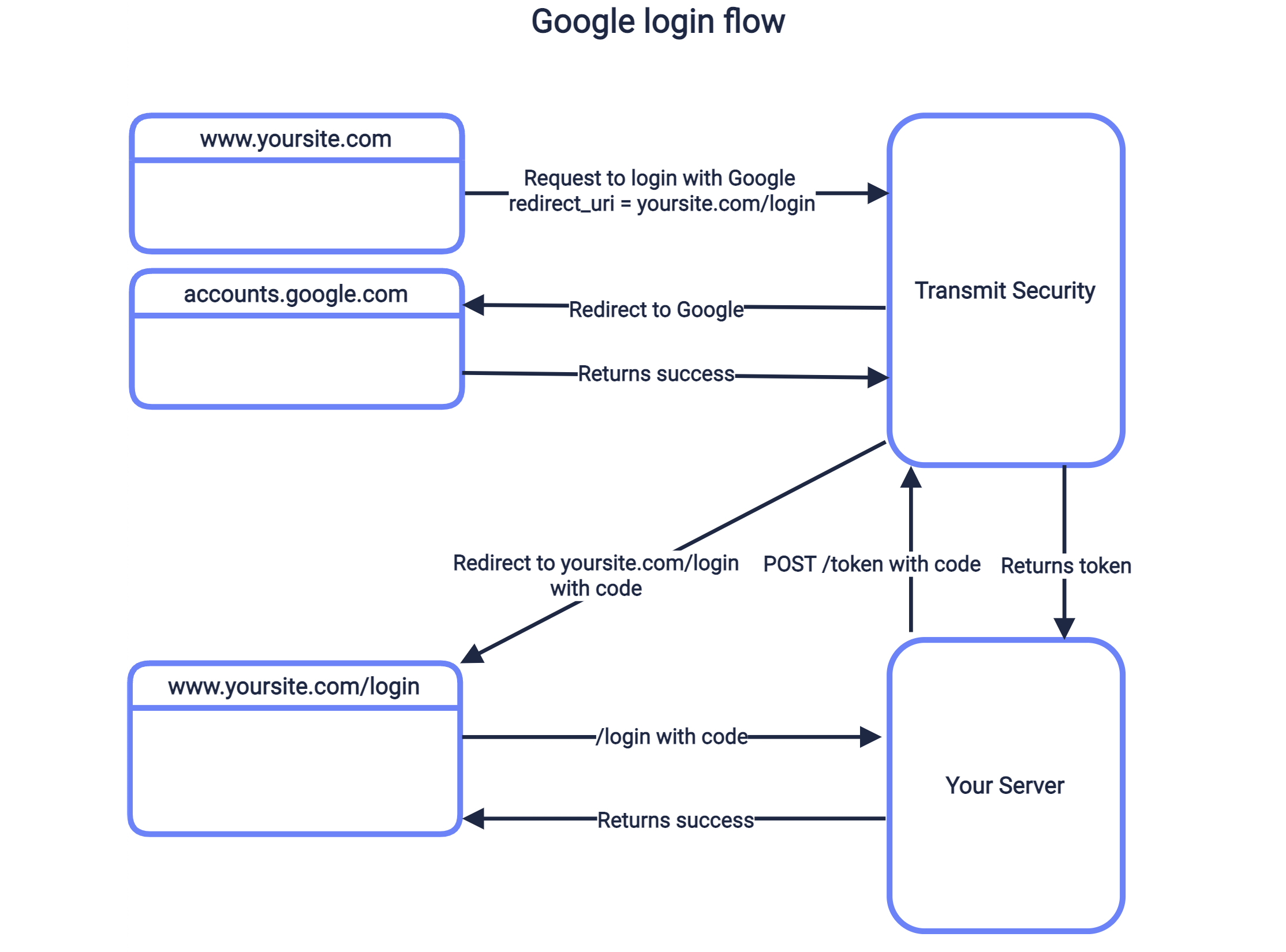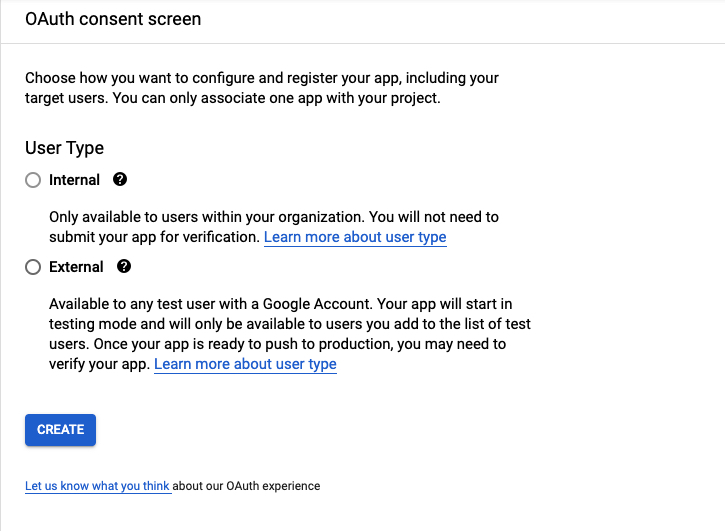Google Sign-In can be used to authenticate users, or create new users based on their email address.
If you are looking for the backend-to-backend integration, see Login with Google (backend-initiated).

Here's how it works:
- User clicks the login button, sending a request to
/auth/googlewithclient_idandredirect_uri - Mosaic redirects to the Google login page, which authenticates the user and redirects back to Mosaic.
- After validating the response, Mosaic redirects back to your
redirect_uriwith a code. - Your application sends the code to your backend, which exchanges it for token.
- Upon a successful exchange, the user is logged in.
Follow the Get your Google API client guide to get your Google client_id and client_secret. You will also need to set your redirect URI to https://api.transmitsecurity.io/cis/auth/google/callback.
For more details on how to create a new project, click here.
The Google consent screen tells users that the application is requesting access to their data, what kind of data, and the terms that apply.
- Open the OAuth consent screen page of the Google API console.
- If prompted, select the project you just created.
- Select User Type (described below) and click Create.

Internal means your app is limited to Google Workspace users within your Google workspace. You can communicate with your internal users directly about how you'll use their data. In order to choose ‘Internal’ your project must be part of Google Workspace.
External means your app will only be available to users you add to the list of test users. Once your app is ready to publish, you may need to verify your app. In most cases, you will need to choose external.
Fill in your application data.
Click Save and continue in the scopes and test user screens without any changes.
To move to In Production status, you're required to verify your app. Learn more
- Login to the Mosaic Admin Portal
- Go to B2C or B2B Identity based on your setup > Authentication methods
- Expand the Google settings.
- Fill in the client ID and client secret retrieved from Google in Step 1
To redirect back to the redirect_uri provided in the initial request, it should be registered in your application settings in Mosaic Admin Portal. From the Admin Portal under Applications, click on your application to edit your OIDC client settings and add this URI under Redirect URIs. If you don't already have an application, you'll need to create one first (see Create application).
Your application settings contain the Client ID and Client Secret for your application, which you'll need for Step 5 and 6.
Use a request like the one below to initiate an authentication flow using Google, described in the sequence diagram above. The create_new_user parameter will determine if this flow applies to new users, or only to existing ones. If set to true (and public sign-ups are enabled for this application), a new user is created if no user is found for the email returned by Google in the next step. The redirect_uri should correspond to the one added in step 4, and the client_id can be found from the Mosaic Admin Portal in the application settings.
Upon successful authentication, the browser will be redirected to the redirect URI along with a code to exchange for tokens in the next step. For example, if https://domain.com/verify is your redirect URI, then Mosaic will redirect to https://domain.com/verify?code=123abc. However, if an authentication error occurs after redirecting to Google, the redirect URI will contain the error instead.
curl --request GET \
--url 'https://api.transmitsecurity.io/cis/v1/auth/google?
client_id=2eb840f.test.Transmit.io&
redirect_uri=https://www.example.com/login&
create_new_user=true' \
--header 'Accept: application/json'To exchange the code received from Mosaic for an ID and access token, your server should send a POST request like the one below to the Mosaic /oidc/token endpoint. Replace placeholders with the code you received in Step 5, your redirect URI, and your client credentials that can be found in your application settings from the Mosaic Admin Portal.
curl -i -X POST \
https://api.transmitsecurity.io/oidc/token \
-H 'Content-Type: application/x-www-form-urlencoded' \
-d client_id=CLIENT_ID \
-d client_secret=CLIENT_SECRET \
-d code=CODE \
-d grant_type=authorization_code \
-d redirect_uri=REDIRECT_URI